Have you heard about supply chain network optimization? Supply chain experts use complex mathematical models, algorithms, and optimization techniques to accomplish network optimization, network design, or even network redesign. They then use this data systematically to analyze and improve your supply chain network’s design, configuration, and operation.
Why would you want to undergo supply chain network optimization?
This data-driven analysis ensures you optimize your network and can make optimal decisions, achieve operational excellence, gain a competitive advantage, and drive your overall business success.
Recognize your own company in any of these scenarios?
- You’re experiencing a merger or acquisition and want to join supply chains and ID synergies and combined network cost savings.
- You want to ID cost-saving opportunities and reduce overall supply chain expenses by optimizing transportation routes, consolidating shipments, balancing inventory levels, or strategically locating facilities.
- You want to enhance customer service levels, strategically locating warehouses and distribution centers closer to customers or critical markets and companies to reduce lead times, increase order fulfillment rates, and improve overall customer satisfaction.
- You want to optimize production and distribution processes, eliminate bottlenecks, and minimize inefficiencies for higher throughput.
- You want to optimize inventory levels, considering demand patterns, lead times, and service level requirements to ensure optimal inventory placement and implement effective inventory management strategies.
- You want a scalable, adaptable network to quickly adjust operations, expand into new markets, or accommodate changes in sourcing strategies.
- You want to understand your supply chain vulnerabilities and develop contingency plans.
- You want to develop e-commerce fulfillment strategies.
A quick tour through the supply chain network optimization process
To begin the process, experts gather and analyze supply chain network data, including demand patterns, product flows, transportation costs, facility capacities, and other relevant metrics.
Next, they create a mathematical model that represents the supply chain network, considering various constraints, objectives, and decision variables (the model may include facility locations, transportation routes, inventory levels, and production capacities).
They subsequently choose an optimization algorithm or technique to solve the mathematical model, performing sensitivity analysis and scenario testing to evaluate different trade-offs, such as the impact of changing demand patterns, adding or removing facilities, altering transportation modes, or adjusting inventory policies.
Next, they generate optimized solutions to meet your defined objectives and constraints. They evaluate the solutions based on key performance indicators like cost, service level, lead time, and resource utilization.
Lastly, they implement the optimized network design and monitor its performance, continuously reviewing and improving the supply chain network based on changing market conditions, business strategies, and performance feedback.
It’s a solid approach. And many small businesses can benefit from supply chain network optimization.
Do you need to locate a warehouse closer to your end customers? Do you need to determine the best place to locate inventory? Are you evaluating a merger or acquisition? Are you planning on expanding into a new market? Supply chain network optimization provides valuable insights for strategic decision-making. It enables organizations to evaluate different scenarios, assess the impact of potential changes, and make informed decisions regarding facility locations, sourcing strategies, capacity expansions, or mergers and acquisitions. If you want to stay competitive in your market, please get in touch with Nexterus today.



